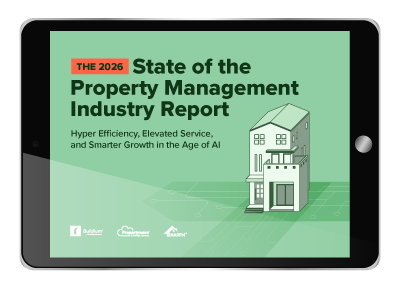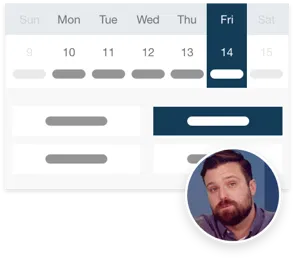In the previous editions of our property management software buying guide, we covered the basics of how to compare property managers, from key features software should have to assessing pricing models and customer reviews. We also explored specific considerations for multifamily property management software. You can find each of these articles in the links below:
Start your free trial today!
Try Buildium for free for 14 days. No credit card needed.
Start Your Trial- Essential property management software features
- Comparing property management software pricing
- Comparing property management software reviews
- 7 steps to find the best property management software for your business
- Choosing the best multifamily property management software
Now, we’re turning our attention to single family solutions. Managing single family properties can be a demanding job, requiring a slightly different approach for each location and property owner. This post takes those factors into account, outlining what you need to know when shopping for single family property management software.
Read on to learn about single family specific features, important capabilities to look out for, and how to compare the various software options out there.
How Does Single Family Property Management Software Help Your Business
Single family property managers often have to deal with a variety of properties, each with their own location, types of tenants, maintenance needs, and other unique features. Property management software accounts for all these differences and simplifies how you manage your portfolio. It’s designed to automate and simplify all the tasks involved in managing rental properties.
The most important benefits of using single family property management software fall into a few key categories:
A Unified Platform: A single platform makes it easier to track and manage all the details of each property in one places. By consolidating your property management tasks, you can see a clear picture of your entire portfolio at a glance. This holistic view helps you make informed decisions and address issues promptly, without having to juggle multiple systems or spreadsheets.
Cleaner Recordkeeping and Reporting: Your software can act as a single source of truth that makes recording transactions, completing accounting tasks, creating reports, and prepping your transactions a lot easier, reducing manual work—and the risk of human error that comes with it.
Having all your financial data in one place supports better transparency and accuracy. You’ll appreciate the time saved when tax season rolls around or when you need to present precise financial summaries to stakeholders.
Streamlined Communication: With tenant and owner portals, you can share important information, updates, and reports with each owner and tenant easily, without getting your wires crossed. These portals foster better relationships by keeping everyone in the loop and addressing their concerns more efficiently.
Whether it’s notifying tenants about maintenance schedules or updating owners on financial performance, clear communication channels minimize misunderstandings and keep things running smoothly.
Automated Tasks: You can save even more time by automating many of the recurring tasks that make up day-to-day operation, keeping your staff focused onthe inevitable curveballs that come your way.
Think of how much simpler it would be if routine activities such as rent collection, lease renewals, and maintenance requests were handled automatically. This not only boosts productivity but also frees you up to focus on more strategic aspects of property management, such as expanding your portfolio or enhancing tenant satisfaction.
Key Features of Single Family Property Management Software
When shopping for single family property management software, there are several core features you should look for.
Tools to Take You from Lead to Lease
From initial marketing efforts, such as creating a listing and syndicating it across various sites, to coordinating showings and sharing important lease details before signing, software should remove roadblocks, so you can fill units faster and keep them filled for longer. Imagine having all your marketing tasks centralized in one place, making it easy to track leads, follow up with prospects, and schedule viewings without the hassle of juggling multiple platforms or spreadsheets.
Maintenance Management
You might be dealing with a wide range of maintenance needs and types of repair work across your properties, so look for tools that help you manage everything more easily.
Software should help you track, schedule, and manage work orders, store all your vendor information, and set up a straightforward way for tenants to send maintenance requests. This means no more lost emails or missed phone calls, and you can prioritize urgent repairs quickly while keeping an eye on routine maintenance tasks to prevent bigger issues down the line.
Accounting and Financial Management
Single family property managers often deal with multiple owners that each have their own priorities and bookkeeping requirements. Keep your accounts organized and efficient with features that let you set up distinct accounts, automate rent collection and expense tracking, and generate and share reports easily. You’ll also want specific tax prep capabilities such as 1099 eFiling.
With these tools, you can simplify the financial side of property management, reducing the chance of errors and making tax season less stressful. Plus, clear and detailed financial reports can help you demonstrate your value to property owners, showing them exactly how their investments are performing.
Tenant and Owner Portals
To stay responsive and maintain a high level of services with less work, look for user-friendly tenant and owner portals for paying rent, submitting requests, sharing documents, and setting up automated reminders and updates. These portals should also be accessible through mobile, so time-sensitive issues don’t go unaddressed for long.
A well-designed portal enhances communication between you and your tenants, making it easier for them to reach out with questions or concerns and for you to respond promptly. For owners, having a dedicated portal means they can access important documents and updates about their properties anytime, from anywhere.
Analytics and Reporting
With the right software, you’ll never be flying blind or second-guessing performance. Advanced insights capture how each of your properties is doing, alongside your entire portfolio and your business as a whole. These analytics can reveal trends and patterns that might otherwise go unnoticed.
With clear reports, making informed decisions becomes much easier, helping to boost your overall efficiency and effectiveness. You’ll have a clearer picture of occupancy rates, rental income, and maintenance costs, enabling you to identify areas for improvement and optimize your operations.
You can share detailed reports with property owners, as well, providing them with transparent and concise information about their investments, which can help build trust and confidence in your management services. On top of that, the ability to track key performance metrics and compare historical data allows you to set realistic goals and develop strategies to achieve them.
Tips for Comparing Single Family Property Management Software
When evaluating different software solutions, consider the following tips:
#1: List Out Your Priorities
Start with a list of needs and priorities. This will help you home in on the features that matter most to you and see how robust those features are in each platform you’re comparing. By defining what you require from a software platform, you can focus on the features that matter most and assess how robust those features are in each solution you consider.
#2: Prioritize Ease of Use
To get the most value, you want your software to be as user-friendly as possible for both you as a property manager and for owners and tenants. Some factors to look for when considering ease of use include:
Mobile Applications: Apps allow property managers to handle tasks on-the-go, from responding to tenant inquiries to managing maintenance requests. A robust mobile application should have a user-friendly design and include all the critical functionalities of the desktop version.
An Intuitive Interface: Software that is straightforward and easy to navigate, reduces the learning curve for new users. Look for platforms that offer clear, coherent layouts and functionalities that your staff, owners, and tenants can understand and pick up quickly. This not only enhances your productivity but also makes it easier for tenants and property owners to engage with the platform.
Onboarding Policies and Customer Support: An effective onboarding process can make a significant difference in how quickly you can get up and running with the new system and start reaping its benefits. Onboarding can take the form of training sessions, tutorials, and dedicated support during the initial setup phase.
Even with onboarding, issues and questions will inevitably arise, and having access to timely, knowledgeable support can help resolve these efficiently. Look for software providers that offer various support channels, such as phone, email, and live chat, and have a reputation for responsiveness and helpfulness.
Customer Reviews: Reading reviews can offer valuable insights into other property managers’ experiences with different software platforms and how easy it was to get started. These firsthand accounts can reveal potential strengths and weaknesses that may not be immediately apparent. Check out the video below for tips on how to evaluate different reviews.
#3: Look for Flexibility and Scalability
Beyond ease of use, it’s important that the software you choose can adapt to your unique workflows and grow alongside your business. This means looking for solutions that are flexible and scalable.
Fields and workflows should be customizable to meet the specific needs of each of your properties. This flexibility can help you create a more efficient and effective management system.
Your property management platform should integrate seamlessly with other tools in your tech stack, such as accounting software or communication platforms, as well. This makes it easier to get the most out of your software, enhancing rather than disrupting your workflows as you grow and introduce new technology. You’ll save you time and reduce the likelihood of errors that can occur when transferring data between systems.
An open API (Application Programming Interface) is an important feature for those who want to further customize their software or connect it with other tools. It allows you to build custom integrations, creating a more personalized and effective management system. This can be particularly beneficial as your business grows and your needs evolve.
#4: Don’t Skimp on Security
As a property manager, you handle sensitive data regularly, whether it’s tenant information, property owner details, or your own business data. Therefore, robust security measures are paramount in the software solution you choose. The software should protect sensitive leasing and financial data, keeping your business compliant with industry standards and regulations.
When evaluating the security of a software platform, consider factors such as data encryption, user authentication (such as two-factor authentication), and regular security updates.
#5: Understand Different Pricing Models
Pricing for property management software can be complex. Some solutions are priced based on the number of units you manage, while others charge a set amount for a package of features. It’s important to look beyond the initial sticker price and consider the overall value and flexibility you’re getting.
Unit-based pricing means that you pay based on the number of units you manage. This can be beneficial for smaller property managers with fewer units, as it scales with your business. However, for larger operations, the costs can add up quickly.
Package or tier-based pricing involves paying a set amount for a bundle of features. Just be aware that some packages may include features you don’t need, or you may need to pay extra for additional services not included in the base package.
Pro Tip: Be wary of hidden fees for add-on services and transactions. These can significantly impact your overall costs.
Review the pricing structure of each software solution carefully, and ask questions to clarify any potential additional charges. A great place to start your cost comparison is our video on property management software pricing below.
Why Buildium Is a Great Fit for Single Family Property Managers
If you want a platform that combines a comprehensive suite of features in a simple-to-use package, Buildium is worth checking out. Here are some reasons why Buildium is an excellent fit for single family property managers:
All-In-One Solution: Buildium’s capabilities cover the entire leasing cycle, from marketing and tenant screening to lease signing and move-in support. This means you can manage every aspect of your properties from one platform, reducing the need for multiple software solutions.
Robust Maintenance Management: Tenants can easily submit maintenance requests in a system that lets you track, assign out, and share updates on work orders, communicating with vendors and keeping tabs on every job efficiently. This means maintenance issues are addressed promptly and tenants stay satisfied.
Advanced Accounting Tools: Buildium can automate rent collection, track expenses, generate financial reports, and get your 1099 tax forms prepped with ease. You’ll cut down on staff time and stress, avoid missing records and human errors. This can lead to more accurate financial management and better insights into your business’s financial health.
Tenant and Owner Portals: Communication portals for both tenants and owners keep everyone in the loop. You can even upload documents such as financial reports and automate updates and reminders, making it easy to share information and keep everyone informed.
Analytics and Insights: Buildium collects all your data in one place and includes features that draw insights from that data, packaging them into convenient reports for your team and the property owners you work with. This can help you make more informed decisions and improve your property management strategy.
Integrations and Open API: Buildium has an ever-growing Marketplace of fully integrated apps. Each is fully vetted and designed specifically for property managers. There’s also an open API that lets you integrate and build your own solutions and workflows, providing additional flexibility.
Buildium offers a 14-day free trial with no credit card required, making it easy to test the software’s features without any commitment.
Find the Right Single Family Property Management Software for Your Business
The right purchasing decision comes down to understanding what makes single family property management software effective and how to compare different solutions. With these guidelines you’ll be well on your way to finding a platform that transforms the way you manage your properties and supports your business for years to come.
Read more on Single-family

